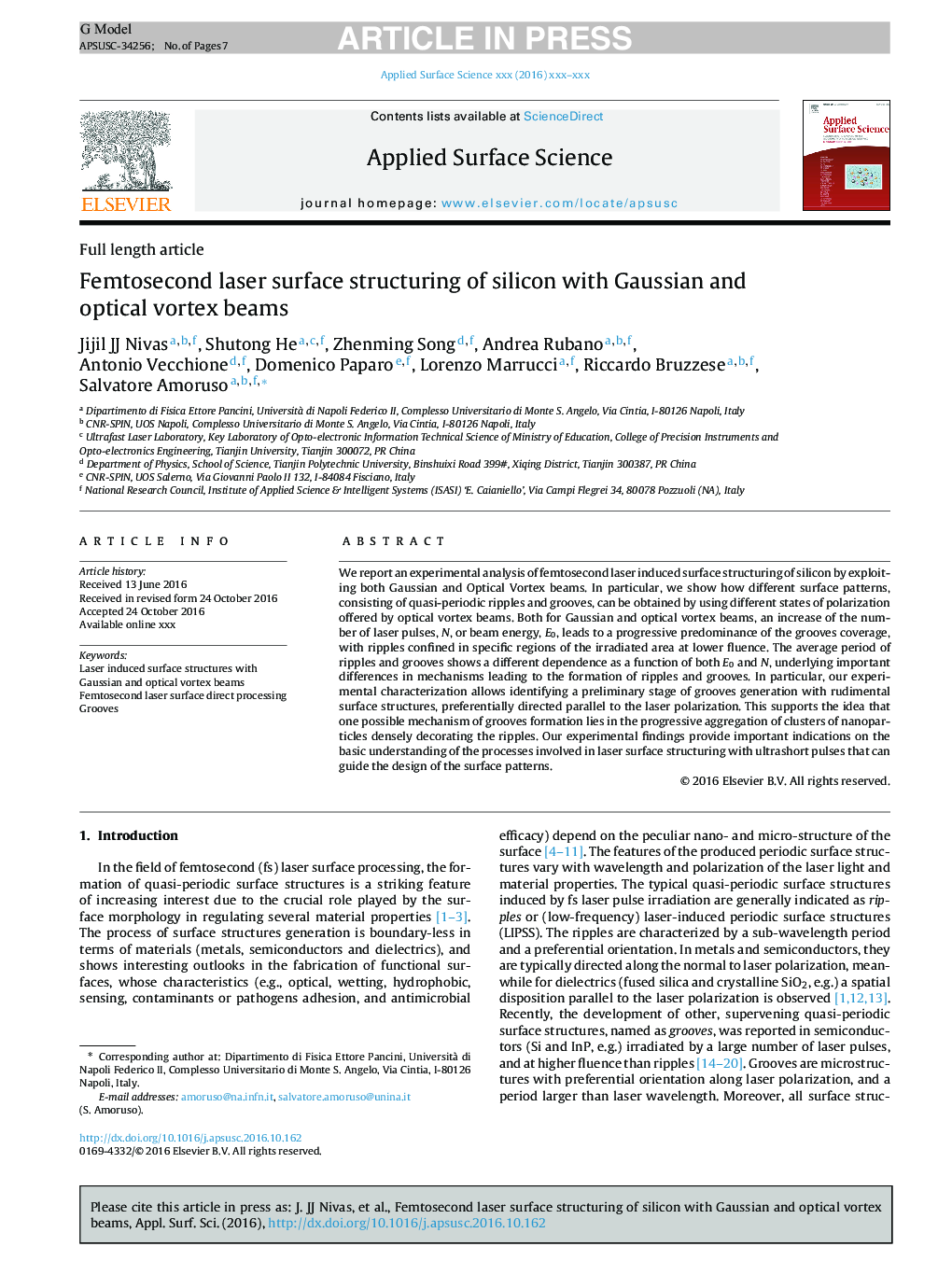| Article ID | Journal | Published Year | Pages | File Type |
|---|---|---|---|---|
| 5346991 | Applied Surface Science | 2017 | 7 Pages |
Abstract
We report an experimental analysis of femtosecond laser induced surface structuring of silicon by exploiting both Gaussian and Optical Vortex beams. In particular, we show how different surface patterns, consisting of quasi-periodic ripples and grooves, can be obtained by using different states of polarization offered by optical vortex beams. Both for Gaussian and optical vortex beams, an increase of the number of laser pulses, N, or beam energy, E0, leads to a progressive predominance of the grooves coverage, with ripples confined in specific regions of the irradiated area at lower fluence. The average period of ripples and grooves shows a different dependence as a function of both E0 and N, underlying important differences in mechanisms leading to the formation of ripples and grooves. In particular, our experimental characterization allows identifying a preliminary stage of grooves generation with rudimental surface structures, preferentially directed parallel to the laser polarization. This supports the idea that one possible mechanism of grooves formation lies in the progressive aggregation of clusters of nanoparticles densely decorating the ripples. Our experimental findings provide important indications on the basic understanding of the processes involved in laser surface structuring with ultrashort pulses that can guide the design of the surface patterns.
Keywords
Related Topics
Physical Sciences and Engineering
Chemistry
Physical and Theoretical Chemistry
Authors
Jijil JJ Nivas, Shutong He, Zhenming Song, Andrea Rubano, Antonio Vecchione, Domenico Paparo, Lorenzo Marrucci, Riccardo Bruzzese, Salvatore Amoruso,
